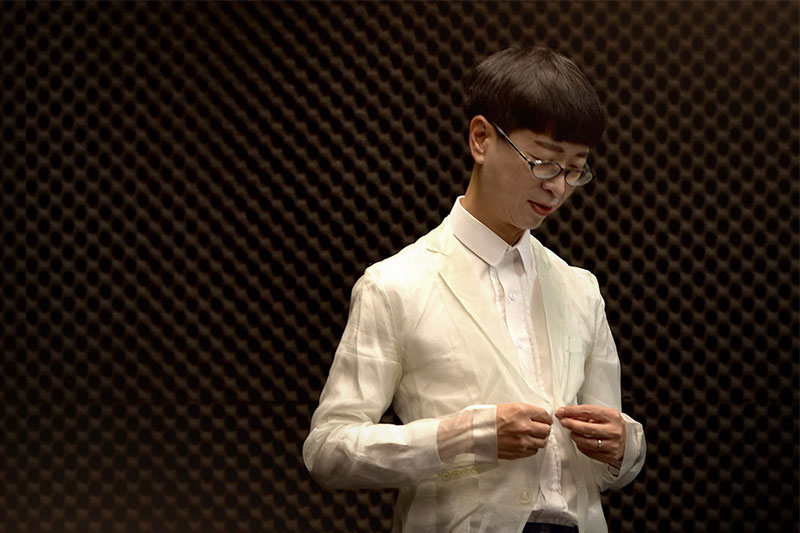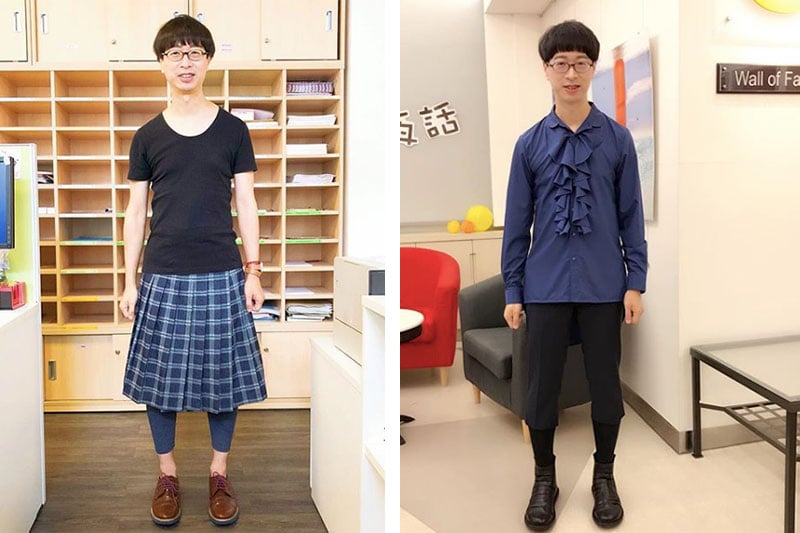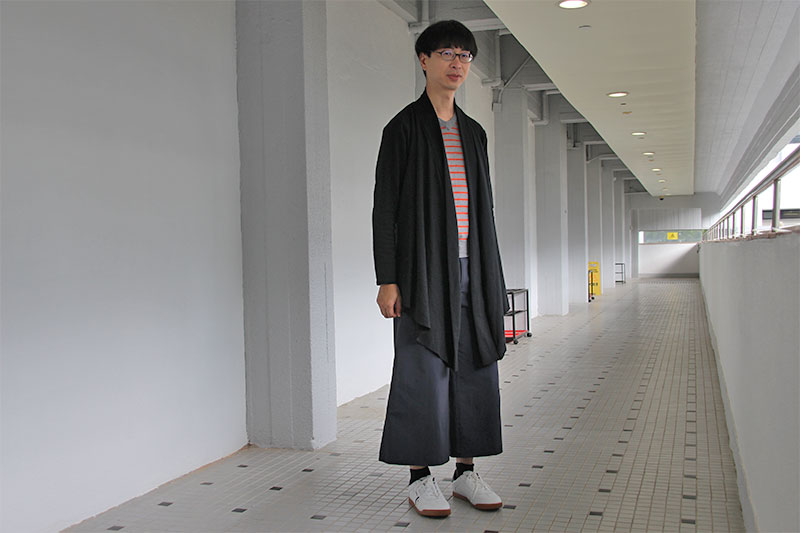Meet the bold and brazen Prof. Anthony Fung, a famed scholar who has shunned the traditional suit and tie in favour of a pleated skirt. Here, he tells us why there is nothing wrong with guys wearing dresses.
Prof. Anthony Fung is a well-respected Hong Kong scholar at the Chinese University’s School of Journalism and Communication who specialises in creative media and pop culture. He is also, probably, the only male professor in the city who wears skirts and makeup to school. The man, now in his 50s, has been challenging the city’s sartorial agenda by dressing in traditionally feminine clothing for a while now, certainly since before the likes of Kanye West and Jaden Smith hopped on the bandwagon. We sat down with him to hear how he hopes his own story of experimenting with womenswear will shake up the traditional perceptions of gender so entrenched in his city.

It was at a panel discussion on gender and culture back in 2012 that Prof. Fung first ventured out in a skirt, pairing his red and black asymmetrical number with a sheer blazer. “The organiser asked me to do something differently. So I wore that skirt, which I’d bought in Japan prior to the event. The talk was the perfect occasion for me to show off my haul,” the professor recounts, grinning.
Brought up in Causeway Bay, Hong Kong’s infamous shopping district, Prof. Fung has always liked shopping, especially from the women’s section. “I always find womenswear fits better on me. At some point, I realised I don’t have a strict gender boundary when it comes to choosing fashion items,” says the fashion-provocateur, who today is wearing a self-designed outfit of navy culottes and matching drape cardigan. Less ostentatious than the sheer floral shirts, plaid skirts and colourfully patterned leggings he’s seen regularly sporting on social media, it still stands out from the crowd.

“I’m not too aware of the fact that this is unusual,” he says of the glances he regularly attracts. “I’ve seen actors dressing in flamboyant outfits, it’s not unusual for them to wear dresses and makeup. It’s a way they brand themselves,” states the professor, who used to work at local radio station RTHK. “We’re used to the idea of acting in certain ways and wearing certain clothes which identify ourselves as male or female. In that sense, we’re performing a gender — a social construct that does not necessarily relate to our biological sex,” points out Prof. Fung. For the longest time, fashion has served as a tool to enforce these stereotypes, something he sees holding particularly strong in his hometown. “The conventional female and male dress etiquette in Hong Kong is so rigid, and the gender binary in fashion is reinforced in every aspect of our life, inside and outside the workplace.”

Now, the professor has deliberately chosen to dress in stereotypically feminine pieces as a gesture to defy those gender expectations. He’s even taken it a step further, integrating the philosophy into the design of his own clothing in a side-project he started a few years ago. “When I design my clothes, I stray away from the conventional rules. For example, buttons are always on the right side on a man’s jacket, whilst those on a woman’s jacket are usually on the left. But I don’t follow these gender rules. I try to eliminate them within my tiny space.” And the reaction he gets is generally positive. “My students like my style a lot. They would feel disappointed if I wasn’t wearing something unusual. My colleagues ask to take pictures with me. And, as for my wife and my daughter, they don’t even pay much attention to what I’m wearing,” he says, letting out a laugh.

It’s not at all surprising. According to a survey conducted by consumer insights company The Intelligence Group, more than two-thirds of the millennials surveyed say gender shouldn’t define a person like it used to; whilst 6 in 10 dismiss the idea that men and women need to conform to traditional roles or behaviours. It is not a phenomenon exclusive to the west, attitudinal changes can also be observed in Chinese society. “It’s become more acceptable for guys to wear and do things that are, traditionally, considered feminine. A decade ago, men couldn’t even be associated with the word ‘beauty.’ Now, male cosmetics are placed at storefronts,” Prof. Fung points out.
This movement towards non-conformity is gaining prevalence, thanks in part to the rise of gender-neutral products and an ongoing discussion in the fashion industry. Major fashion house Gucci has taken the lead by having both sexes modelling the same lines in 2016. Fast fashion brands like Zara and ASOS have also jumped on board, dropping unisex capsules on a continuous basis. “The commercial sector is the driving force of this movement. Quite effectively, it is pushing it further towards critical masses with capital and commodities,” says Prof. Fung.
While public perception has become more open to the idea of gender-fluidity, Prof. Fung says stereotypes remain evident, especially in certain industries. “If we look at banking and the legal profession, the norms still exist. Because, beyond gender, it’s also about class and social status,” he explains. Still, the world he imagines is not one where these norms don’t exist.“There will always be genders, we can’t eliminate them, and neither should we artificially create a society that is politically correct,” he tells us. Instead, it is one where the possibilities of self-expression for those who wish to go there are varied and wide open. Just look to him as proof.
Related Articles
The Women’s Foundation: The NGO Driving Workplace Gender-Inclusivity in HK
Plus Size Fashion: The Booming Retail Trend HK Is Missing Out On
Finix Wear: The Athleisure Label Trailblazing in Gender Fluid Fashion in Asia





